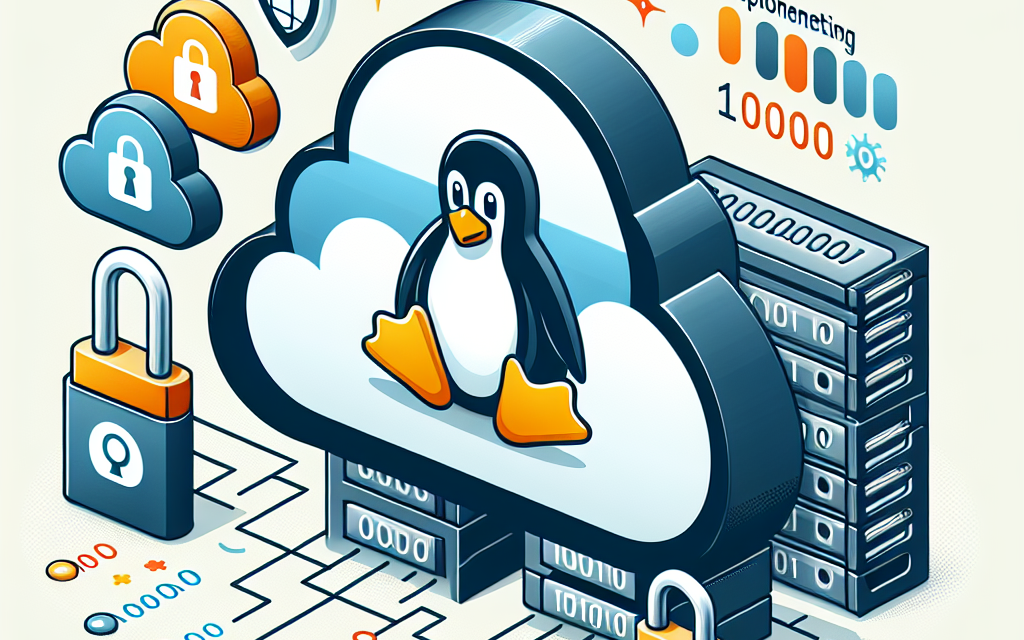In today’s cloud-centric world, securing Linux servers is paramount, especially as organizations increasingly rely on cloud infrastructures to handle sensitive data and critical applications. Identity and Access Management (IAM) policies play a crucial role in ensuring that only authorized users can access resources, thus enhancing cloud security. In this article, we’ll explore how to effectively implement IAM policies on Linux servers to bolster your organization’s security posture.
Understanding IAM Policies
IAM policies define permissions for what actions users and resources can perform within a cloud environment. They serve as a way to enforce the principle of least privilege, where users are granted only the access necessary to perform their tasks. This minimizes the risk of unauthorized access and potential data breaches.
Key Concepts
-
Users and Roles: In IAM, users are the individuals who access resources, while roles are a collection of permissions that can be assigned to users or resources (e.g., EC2 instances).
-
Policies: Policies are JSON documents that define permissions. They can grant or deny actions across specific resources.
-
Groups: A group is a collection of users that share the same permissions, simplifying management for larger teams.
Why Implement IAM Policies?
IAM policies are essential for:
- Fine-grained control over resource access: Reducing the risk of data breaches.
- Auditing and compliance: Keeping track of who accessed what resources and when.
- Streamlined user management: Easing the administrative burden by grouping users.
Implementing IAM Policies on Linux Servers
Step 1: Assess Your Environment
Before implementing IAM policies, conduct a thorough assessment of your Linux environment. Identify the following:
- Types of resources: Understand which cloud services and APIs you are using.
- User roles and responsibilities: Document who requires access to what resources.
- Current access controls: Review existing permissions to identify any gaps.
Step 2: Define IAM Policies
Define IAM policies based on your assessment. Use the principle of least privilege to create tailored policies for different user roles.
Example: Policy for a Developer
json
{
“Version”: “2012-10-17”,
“Statement”: [
{
“Effect”: “Allow”,
“Action”: [
“ec2:DescribeInstances”,
“s3:ListBucket”,
“s3:GetObject”
],
“Resource”: “*”
}
]
}
This policy grants developers the ability to describe EC2 instances and list and get objects from S3 buckets while preventing access to other resources.
Step 3: Apply Policies to Roles and Users
Using your IAM service (AWS IAM, Google Cloud IAM, etc.), create roles and apply the policies you defined. Assign roles to users based on their responsibilities, ensuring they only have access to the resources they need.
Step 4: Monitor and Audit IAM Policies
Regularly audit your IAM policies to ensure they meet your organization’s security protocols. Use cloud provider tools to monitor access logs and detect any anomalies:
- AWS CloudTrail: Monitor and log account activity.
- Google Cloud Audit Logs: Get insights into resource interactions.
Step 5: Integrate with Linux Admin Tools
For Linux servers, consider integrating IAM with configuration management tools like Ansible, Puppet, or Chef. By using these tools alongside IAM policies, you can automate the deployment of user permissions and manage configurations consistently.
Example with Ansible
You can write an Ansible playbook that assigns IAM roles to EC2 instances as follows:
yaml
- name: Assign IAM role to EC2 instances
hosts: all
tasks:- name: Create EC2 instance
ec2:
key_name: your-key
instance_type: t2.micro
image: ami-0abcdef1234567890
region: us-west-2
wait: yes
count: 1
instance_tags:
Name: MyInstance
assign_public_ip: yes
iam_role: “YourIAMRole”
- name: Create EC2 instance
Step 6: Train Users
Educate your team about the importance of IAM policies and how to navigate them securely. Training can significantly reduce the likelihood of accidental misconfigurations and promote best security practices.
Conclusion
Implementing IAM policies on Linux servers is crucial for enhancing cloud security and protecting sensitive data. By carefully defining and applying these policies, monitoring access, and integrating them into your Linux management practices, you’ll safeguard your cloud resources effectively.
At WafaTech, we understand the importance of robust security measures in today’s digital landscape. Stay informed on best practices and security implementations to make your cloud transition as secure and seamless as possible.
By following the above steps, your organization can take significant strides toward securing its Linux infrastructure in the cloud, ensuring that compliance, security, and operational efficiency are all prioritized.





